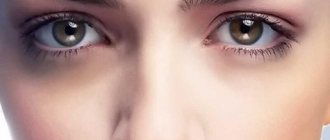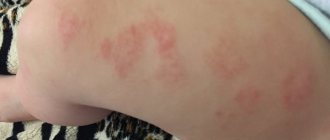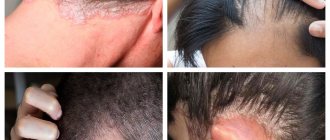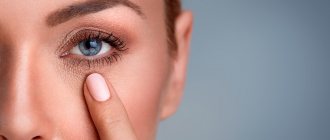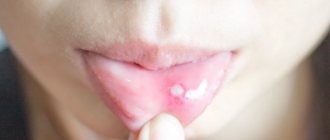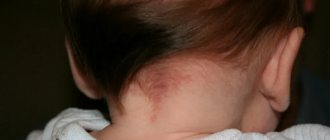The disease is treated by: Pediatric ophthalmologist
- Causes of blepharitis
- Types of blepharitis
- Blepharitis in children: symptoms, diagnosis and treatment
- Diagnostics
- Treatment of blepharitis
Blepharitis is a disease that occurs quite often in children. It is an inflammation of the edges of the eyelids, which is associated with very thin skin and fiber in this place, because the tissue is loose and there is no fat.
As the disease progresses, the eyes do not always change in appearance. This misleads parents, provokes inaction or, in some cases even worse, the use of folk remedies without consulting a doctor. You should know and always remember that blepharitis is a dangerous disease that can have a number of complications.
How does blepharitis occur - the first symptoms of the disease
The health of a child’s eyes largely depends on the hygiene skills he has learned, the state of his immunity, and his tendency to allergies of various origins.
In this article
- How does blepharitis occur - the first symptoms of the disease
- Blepharitis in children - why is it dangerous?
- Why does blepharitis appear in a child?
- Types of blepharitis
- Purulent blepharitis: symptoms and treatment
- How to cure seborrheic blepharitis?
- Folk remedies for treating blepharitis
- Seborrheic blepharitis - prevention
Seborrheic blepharitis can develop against the background of previous infections, colds, hypothermia, as well as due to dirt and dust from the hands getting into the eyes. The first symptoms of the disease: plaque on the eyelid edge, redness of the eyelids, itching, lacrimation, may seem harmless to parents, and they begin independent treatment of the disease, while the disease itself continues to develop with new complications. This is the main danger of blepharitis.
What it is?
Any change in skin color under the eyes can be the result of various problems. Moreover, the shade can vary and appear blue or yellow. This also depends on the underlying problem hidden in the child’s body.
At the same time, other symptoms may appear: swelling, fever, itching, pain, problems sleeping, etc.
Redness or any change in skin color under the eyes means there is a health problem that needs to be looked for and treated.
Blepharitis in children - why is it dangerous?
Untimely and inadequate treatment of blepharitis will lead to the disease becoming chronic. Treatment of this form of the disease can last up to one year, and all this time the child will experience unpleasant symptoms: burning, itching of the eyelids, increased lacrimation. Constant swelling of the eyelids disrupts the skin, which will scar, causing eyelash loss and abnormal growth.
Possible complications of blepharitis in children:
- chronic conjunctivitis - appears against the background of prolonged blepharitis;
- stye, chalazion - occur due to blockage of the sebaceous glands at the edge of the eyelid;
- inflammation of the cornea - improperly growing eyelashes, constant irritation of the eyelids can cause inflammation on the surface of the cornea;
- increased lacrimation or, conversely, “dry eye” syndrome - if you do not carefully care for the surface of the eyelids, dandruff flakes can accumulate on the tear film, causing irritation.
The sooner a child receives help in treating blepharitis, the higher the chances of a favorable prognosis for the course of the disease. A well-designed treatment regimen significantly reduces the risk of complications.
Diagnostics
A pediatric ophthalmologist examines the child, collects anamnesis and complaints. Concomitant diseases are also identified or rejected, and laboratory tests are carried out.
Biomicroscopy of the eye is used to determine visual acuity. The first technology makes it possible to assess the condition of the tear film, the edges of the eyelids, the eyeball, etc. Refraction and accommodation are examined, on the basis of which the following can be identified: myopia, astigmatism, etc.
To confirm or deny the presence of Demodex mites, eyelash microscopy is performed.
If there is a suspicion of the infectious nature of the disease, a BAC culture of a smear from the conjunctiva is performed.
To identify helminths, a stool test is prescribed, and in case of an allergic course of the disease, allergy tests are performed.
When blepharitis exists for a long time and causes hypertrophy of the eyelid margins, the doctor prescribes an examination to exclude various forms of cancer, carried out by biopsy followed by histological examination of the biomaterial.
Why does blepharitis appear in a child?
When making a diagnosis, the doctor takes into account the nature of the origin of blepharitis, and the treatment plan depends on this.
If blepharitis occurs as a reaction of the body to some allergen, then antihistamines will be included in the treatment regimen. If the disease has other causes: anemia, vitamin deficiency, infections, etc., the specialist takes them into account when writing prescriptions. Why might blepharitis appear in a child?
Causes of blepharitis in children:
- unsanitary living conditions, lack of necessary hygiene, use of other people's scarves and towels;
- immunity weakened by infectious and colds;
- poor diet, vitamin deficiency;
- hypothermia, emotional and physical fatigue;
- chronic conjunctivitis, eye diseases;
- the presence of parasites in the body, infection with staphylococcus and demodex.
Drops for moisturizing the eyes if there is dryness of the mucous membrane, medicinal ointments to soften the surface of the eyelids, solutions for washing the eyelids, compresses, etc. are effective. Physiotherapy procedures are quite effective: magnetic therapy, ultraviolet irradiation, UHF. They should be started when the symptoms of acute blepharitis are eliminated.
Types of blepharitis
Since the causes of blepharitis in children can be different, it is customary to distinguish several types of the disease. There are allergic, ulcerative, demodectic, scaly blepharitis. In all cases, clinical diagnosis is necessary to accurately determine the cause of the disease, otherwise treatment may be lengthy and ineffective.
Main types of blepharitis:
- seborrheic blepharitis - accompanied by swelling of the eyelids, so called because it affects the epidermis at the base of the eyelashes, the skin in these places peels off in scales;
- ulcerative - this type of blepharitis is characterized by the appearance of purulent ulcers on the surface of the eyelids, the disease is similar in symptoms to seborrheic blepharitis, and is severe;
- demodicosis - the causative agent of the disease is the iron mite, which lives in the sebaceous glands and hair follicles;
- allergic - the disease is activated by a specific allergen, which can be house dust, animal hair, or plant pollen.
Usually, in order for a child to start an inflammatory process of the eyelids, several negative factors must be present: low body resistance to infections, parasites, non-compliance with hand hygiene rules, excessive secretion production by the sebaceous glands, activation of the allergen.
Associated symptoms
Itching can manifest itself in different forms. Some patients' eyes itch a little, others experience a strong burning sensation, which is accompanied by pain, discomfort and other characteristic symptoms.
Itching with redness
In almost all cases, itching in the eyes is accompanied by redness of the surface of the whites or eyelids. The appearance of redness can inform the doctor about the presence of an allergic reaction or the development of an ophthalmological disease.
When itching with redness of the cornea, the patient is usually diagnosed with conjunctivitis. The disease is accompanied by increased sensitivity to light, blurred vision, and a feeling of sand in the eyes. The skin around the eyes begins to turn red. Mucous discharge appears on the eyelids, which dries out and remains in the form of crusts.
With allergic conjunctivitis, the mucous membrane turns red and a runny nose may develop. Symptoms occur when allergens enter the body.
Itching with swelling
Swelling around the eyes is a common symptom of an allergic reaction. For example, if itching and swelling are observed frequently and are caused by certain foods, the patient needs to completely reconsider the diet.
Itching with peeling
Peeling of the skin can inform the doctor that the patient has demodicosis. This is a disease in which the sebaceous glands are affected by mites.
The skin turns red around the eyes, around the lips, and on the chin. Symptoms become more pronounced when working at a computer.
Itching in the eyes and ears
If the eyes itch or there is discomfort in the ears, the patient needs to be checked for the presence of microscopic mites.
About 80% of people encounter them. Ticks spend most of their time in passive mode and do not bother humans. Their activity begins when the immune system is weakened and other diseases appear.
Itching with dryness
Dryness of the mucous membrane may indicate dry eye syndrome. It is usually accompanied by itching, burning, fear of light and rapid fatigue of the patient. Sometimes there are crusts in the corner, slight redness of the conjunctiva. The eye begins to hurt.
The feeling of dryness becomes stronger in sunny or windy weather, weakens in humid and warm air.
Itching with runny nose
With a runny nose, redness of the mucous membrane is common. Sometimes there is discharge from the eyes: at first it is transparent, gradually pus is mixed with it. Swelling of the nasal mucosa with dark circles around the eyes indicates the presence of infection.
Itching in the ears, eyes, throat and palate is a symptom of inflammation of the mucous membranes or allergic rhinitis.
Severe itching
Very severe itching in the eyes is caused by various ophthalmological diseases, such as keratoconjunctivitis. It affects the conjunctiva of the eyelid and the eyeball. It is accompanied by hard and dense growths on the eyelids, most often on the upper ones. In addition, photophobia, lacrimation, and viscous discharge may be present.
With pathology of the conjunctiva, the cornea becomes gray and hypertrophied, pain appears due to damage to the epithelium.
Purulent blepharitis: symptoms and treatment
With scaly blepharitis, the edges of the eyelids are somewhat thickened, and areas with damaged epidermis are visible. Ulcerative blepharitis is characterized by the appearance of pustules, which, when opened, reveal bleeding ulcers. This form of the disease is extremely dangerous, because with purulent blepharitis in children, bacteria and infections can get into the wounds. Scarring of such lesions leads to the appearance of small seals on the skin, loss and improper growth of eyelashes. Purulent blepharitis in a child is treated with bactericidal drugs, the action of which is aimed at suppressing microorganisms and reducing the amount of pathogenic microflora. During the acute period of the disease, when the pain is still strong, you should not stay in the sun without sunglasses, as your eyes will water more and cause even more discomfort.
Purulent blepharitis - treatment:
- sanitation in the area of the eyelid lesion;
- antiseptic and antimicrobial agents;
- antibiotics, ointments;
- antiviral drugs;
- moisturizing eye drops, tear substitutes for excessive dry eyes.
Blepharitis occurs as a result of a weakened child’s immunity due to illness and psychosomatic disorders. When treating purulent blepharitis, it is recommended to pay attention to the child’s mental health, reduce anxiety and minimize states of extreme agitation.
How to cure seborrheic blepharitis?
Seborrheic blepharitis manifests itself as severe redness of the eyelids, swelling is obvious and intolerance to bright light is observed, there is a burning sensation and tingling sensation in the eyes. Skin flakes appear on the lower edge of the eyelids, similar to gray dandruff. A treatment regimen for seborrheic blepharitis is drawn up by a doctor. Since with this disease the skin of the eyelids peels off in scales, it needs additional softening. The eyelids must be lubricated with fish oil and synthomycin solution. Drug treatment may include antibiotics, antiseptics, hormonal drugs, and zinc-based drugs.
Effect of drugs for seborrheic blepharitis:
- anti-inflammatory - agents that reduce swelling are used;
- antiseptic - antiputrefactive agents, prevent the development of decomposition processes in wounds;
- antibacterial, softening and drying - ointments, creams soften damaged areas of the epidermis and facilitate the separation of scales, which helps accelerate skin regeneration processes.
Eyelid massage for scaly blepharitis helps restore blood circulation. It should be started when the inflammation subsides a little. The eyelids are massaged with light finger movements; medicinal ointments and creams can be used to facilitate gliding. Massage for children is carried out for 7-10 minutes.
Folk remedies for treating blepharitis
The experience of traditional medicine is quite effective for eye diseases. Medicines - drops, tablets, ointments - help relieve inflammation, reduce swelling of the eyelids, moisturize the eyes, eliminating burning and stinging, and herbal decoctions are widely used for compresses and rinsing, cleansing the eyelids of pus and skin flakes.
All decoctions used must be warm, since cold liquids can provoke stagnation. When choosing the composition of the herbal collection, you need to take into account the child’s tendency to allergies.
It is advisable to consult a doctor when choosing herbal components for a compress. He may prescribe washing with infusions of eucalyptus leaves, chamomile, calendula, clover, and dill seeds. Hygienic procedures are carried out daily to remove dead particles of the epidermis. Using a gauze swab soaked in a warm infusion of herbs, you need to carefully remove adhered skin particles, directing the movement to the side. You cannot make vertical movements, as this can be traumatic for the eyelids.
You can treat the skin of your eyelids with medicated oils, such as rose oil, made from rose petals. The skin should already be cleared of scales and free of ulcers. Rose oil has an antimicrobial effect, tones the skin of the eyelids, relieves inflammation, heals the epidermis and promotes rapid skin restoration.
"SM-Clinic" - taking care of your child
Our medical center employs some of the best pediatric doctors in various fields in St. Petersburg. Our professionalism is confirmed by an impeccable reputation. The clinic has advanced equipment that allows you to quickly and accurately diagnose various ophthalmological diseases, including blepharitis.
Make an appointment and come to us if you need truly competent help and effective therapy.
Ageev Vladimir Sergeevich Clinic
Author of the article
Ageev Vladimir Sergeevich
Candidate of Medical Sciences
Specialty: ophthalmologist
Experience: 16 years
The information in this article is provided for reference purposes and does not replace advice from a qualified professional. Don't self-medicate! At the first signs of illness, you should consult a doctor.
Seborrheic blepharitis - prevention
To prevent relapses of blepharitis, children must carefully follow a set of preventive measures recommended by their doctor. The main task of the parents of a child who has had blepharitis is to prevent the disease from reoccurring, and for this it is necessary to completely cure the disease. Even if the main symptoms have disappeared, it is worth continuing treatment: taking prescribed medications, doing eyelid massages, going to physiotherapy, protecting your eyes from external influences.
Relapse of blepharitis can also be provoked by new diseases, intoxication of the body, overheating and hypothermia, and unfavorable environmental conditions in the area, city, or region.
What is required to strengthen a child’s immune system?
- enriching the child’s diet with vegetables, fruits, leafy greens, as well as legumes and seafood, pickles and smoked foods should be excluded;
- daily physical activity: running, gymnastics, outdoor fitness;
- taking multivitamin preparations that increase immunity;
- control of visual stress, adherence to sleep and rest schedules;
- Monitor the microclimate in your home and clean it regularly.
You can overcome blepharitis if you make your child healthier and teach him the rules of personal hygiene. At the first feeling of discomfort in the eyes, with redness and swelling of the eyelids, you must seek qualified help.

